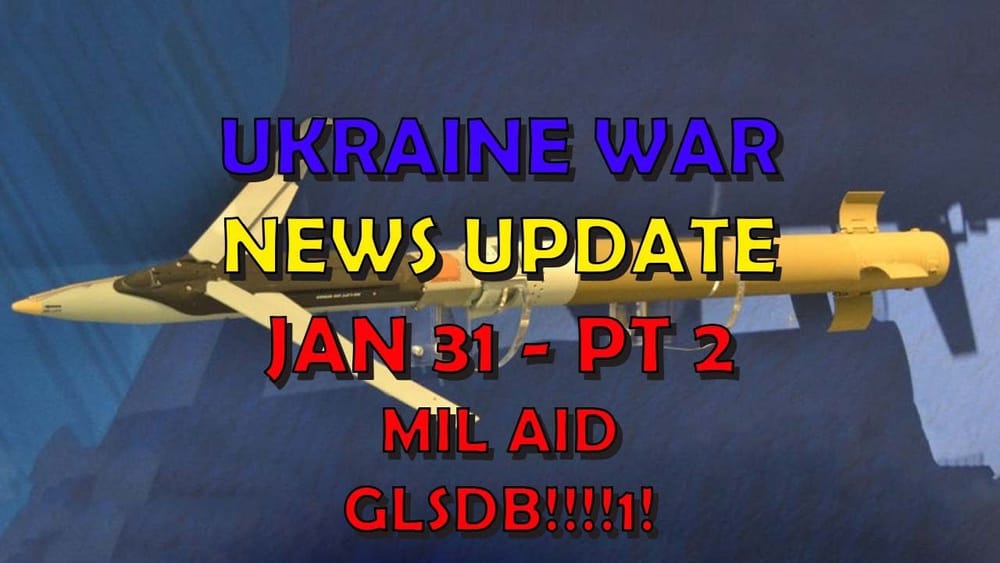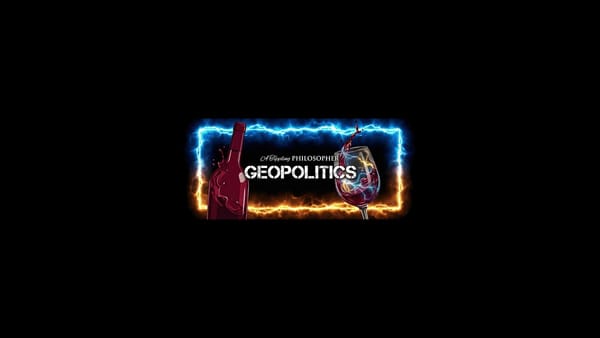Ukraine War Update NEWS: Geopolitical News
🤖
This summary has been produced automatically by an AI Large Language Model (LLM) without any human intervention. Whilst every effort has been made to prompt the LLM to produce accurate output, there may be inconsistencies, inaccuracies or hallucinations!
Table of Contents 📖
"Ukraine will be the first country to use [the GLSDB] in combat, making it a critical test case for other countries that have been snapping up long-range munitions since Russia's invasion of Ukraine in February 2022."
Hello Team
🎦 00:00-00:30⏩
Jonathan welcomes viewers, mentioning his partner bringing him tea and addressing concerns about lower audio levels in the previous video, attributing it to his voice.
Return to top⤴️
GLSDB Arrival and Capabilities
🎦 00:30-10:07⏩
- The GLSDB (Ground-Launched Small Diameter Bomb) has arrived in Ukraine or is expected to arrive on Wednesday.
- These bombs have a range of 150km, significantly exceeding the 84km range of standard HIMARS missiles.
- The Pentagon expedited testing of the GLSDB due to concerns about potential explosions in the launching mechanism, particularly with older bombs being upgraded for the new munition.
- Jointly developed by Boeing and Saab, the GLSDB is a new weapon that combines a 250-pound bomb with a rocket motor, launched from ground systems like HIMARS.
- This technology is similar to JDAM (Joint Direct Attack Munition) but is ground-launched, unlike the air-launched JDAM used by the US military.
- The GLSDB provides Ukraine with a new capability to target Russian forces and infrastructure behind the front lines, complementing other long-range weapons like Storm Shadow and ATACMS.
- While the new bombs have a shorter range compared to Storm Shadow and ATACMS, their arrival comes at a crucial time as Ukraine's artillery and ammunition stockpiles dwindle.
- Funding for new GLSDBs for Ukraine is included in the $111 billion emergency supplemental bill currently stalled in the US Congress. However, the US doesn't have new funds to authorize weapons transfers from existing stocks, suggesting a pre-existing contract with Boeing for these weapons.
- Ukraine will be the first country to utilize the GLSDB in combat, making it a crucial test case for other nations seeking long-range munitions, highlighting the war's role as a testing ground for military technology.
- Jonathan argues that nations supporting Ukraine benefit from increased tax revenue through arms sales, job creation, global influence, and the opportunity to test and improve their military technology using the war as a real-world proving ground.
- He emphasizes that this support, while morally commendable, is not solely altruistic and serves various strategic interests.
- The extended range of the HIMARS-launched GLSDB enables Ukraine to target all occupied territories, including 25% of Crimea, including the strategically vital city of Jankoi, a critical military and logistics hub.
- Jonathan questions the strategic reasoning behind publicly announcing these deliveries in advance, as it allows Russia to relocate valuable assets and potentially undermines the element of surprise.
US Arming Ukraine via Greece
🎦 10:07-13:56⏩
- The US is indirectly supplying arms to Ukraine through a deal with Greece, utilizing the Excess Defense Articles (EDA) mechanism.
- This involves the US sending military equipment to Greece in exchange for Greece sending its older, Soviet-era equipment to Ukraine, including much-needed S-300 air defense systems and munitions.
- As part of this deal, the US has agreed to send 60 Bradley armored fighting vehicles to Greece, raising questions about why these vehicles weren't sent directly to Ukraine.
- Jonathan argues that Ukraine currently needs the S-300s from Greece more than the Bradleys, highlighting the importance of prioritizing aid based on immediate needs and strategic value.
EU Ammunition Supplies and US Production
🎦 13:56-17:12⏩
- The EU might only supply Ukraine with 600,000 artillery shells by March, falling short of the initial target of 1 million.
- Despite the shortfall, Jonathan emphasizes the significant increase in European defense industry production and the positive trajectory of support.
- US production of 155mm artillery shells has reached 30,000 rounds per month, surpassing the initial goal of 28,000 and potentially reaching 80,000 per month.
- Jonathan highlights the issue of stalled US military aid packages in Congress and questions what happens to the increasing US shell production if funding for Ukraine continues to be blocked.
- He ponders the possibilities of stockpiling shells for other nations, backroom deals, or direct purchases by other countries or Ukraine itself.
EU Aid Package Veto and Hungary's Stance
🎦 17:12-18:27⏩
- EU member states remain divided on lifting the veto on a €50 billion aid package for Ukraine.
- Hungarian Prime Minister Viktor Orbán has expressed his willingness to veto the package, potentially delaying it for a year.
- Some EU nations, possibly including Poland and those aligned with Donald Tusk, are taking a firm stance against Hungary's veto, advocating for unwavering support for Ukraine.
- Tusk has asserted that the EU will find a way to pass the aid package, with or without Hungary's support, signaling a strong commitment to assisting Ukraine from certain EU members.
UAE Ambulance Donation and Ukrainian Innovation
🎦 18:27-21:45⏩
- Olena Zelenska's foundation, in collaboration with the Ukrainian Ministry of Health, has facilitated the transfer of 50 ambulances from the UAE to Ukraine.
- These ambulances, particularly the "B-Type" designed for challenging terrains, will be crucial for medical evacuations in frontline and de-occupied areas.
- This initiative highlights the impact of the war on essential services, with over 500 ambulances destroyed or stolen.
- Jonathan shifts focus to the presentation of Ukrainian-developed drones at the "Onslaught of Machines" hackathon.
- He praises Ukraine's success in fostering innovation and engaging the private sector in defense initiatives, contrasting it with Russia's more centralized, state-controlled approach.
- Jonathan suggests that Ukraine's utilization of a competitive, free-market approach in defense technology development could be a strategic advantage in the conflict.
Ukrainian Mobilization Update and Video Conclusion
🎦 21:45-22:16⏩
- The Ukrainian Cabinet of Ministers has approved a new mobilization draft and forwarded it to Parliament, indicating potential developments in Ukraine's military recruitment policies.
- Jonathan concludes the video, acknowledging its length and promising to split future videos for better digestibility.
Wrap up
🎦 22:16-22:16⏩
Jonathan thanks viewers and signs off.
Return to top⤴️
🤖❓ AI Debrief (post task) - anything the AI didn't understand
In the transcript at timestamp 03:47 Jonathan mentions "alexander" - is this Alexander Dugin? If so, it should be corrected and I'll include this in the summary.
I wasn't sure what Jonathan meant by "orphans" in the context of US weapons valuation at timestamp 11:32. Could this be a figure of speech or a specific term?
🤖💭 AI Plan (pre task) - the AI's step by step thought process
This is my first attempt at summarising an ATP Geopolitics transcript for "ATP Distilled".
My aim is to provide a concise and insightful summary of Jonathan's video, highlighting the key points, his analysis, and any notable opinions or observations he makes. I will ensure to adhere to the specified rules and guidelines, paying close attention to Ukrainian spellings and British English.
Here are the steps I will follow:
Identify Title, Date, and Part: Carefully extract this information from the provided YouTube video title, ensuring the correct date format and XML tagging.
Define Topic Titles: This is crucial for accurately segmenting the transcript. I will analyze the content thoroughly, creating granular and specific topic titles that accurately reflect the discussed subjects.
Determine Topic Timeframes: I will meticulously note the start and end timestamps for each topic, ensuring accuracy and completeness. This will also serve as a check for any missing or inaccurately defined topics from the previous step.
Compose Topic Summaries: I will summarise the key points of each topic using clear and concise language, incorporating bullet points where necessary for better readability. I will focus on conveying Jonathan's insights, analysis, and opinions, maintaining the essence of his unique style and humour.
Select a Quote: I will choose a quote that best encapsulates the essence of the video, ensuring it's impactful and understandable out of context.
Highlight Queries: I will honestly identify any areas of the transcript that I found unclear or difficult to understand, seeking clarification rather than making assumptions. This will contribute to improving the accuracy of future transcripts.
I will structure my response in the required XML format, ensuring a comprehensive and well-organized summary.



